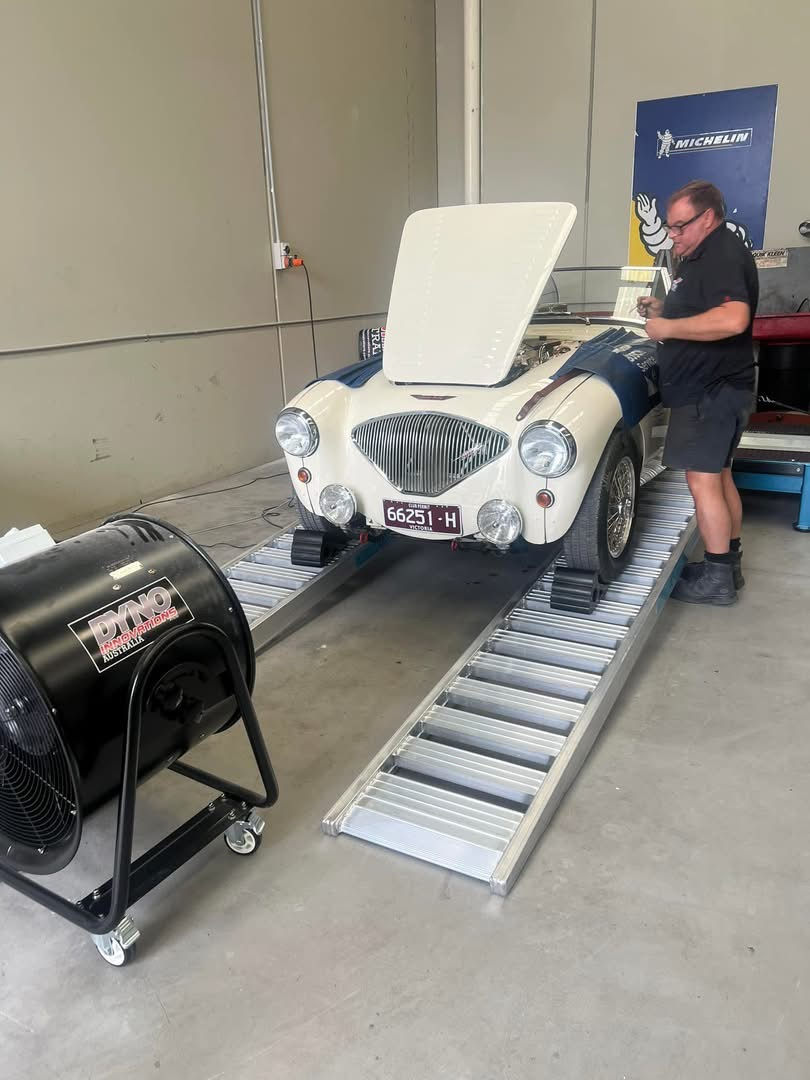What Happens to Your Car's Engine Designed for Leaded Fuel When Unleaded Fuel Takes Over
- Chris Watt

- Jun 10
- 4 min read
The auto industry has seen a dramatic shift in fuel usage over the last few decades, especially moving from leaded to unleaded gasoline. This change impacts many classic car lovers and owners of vintage vehicles. It's important to understand how using unleaded fuel affects engines that were originally designed for leaded gasoline. This post will break down the effects of unleaded fuel on these engines, along with useful tips for car owners.
Understanding Leaded vs. Unleaded Fuel
Lead was a popular additive in gasoline, mainly used to reduce engine knocking and boost performance, particularly in high-compression engines. However, the harmful health effects linked to lead exposure led to the gradual discontinuation of leaded gasoline. Unleaded fuel emerged as the standard fuel type, providing a cleaner option that complies with modern emissions regulations.
For vintage car owners, the transition to unleaded fuel can present challenges. It is vital to understand how this shift affects engine compatibility and what measures can be taken to ensure the longevity of classic engines.
The Impact of Unleaded Fuel on Leaded Engines
Using unleaded fuel in leaded-engine vehicles can lead to several issues:
Valve Seat Recession: A primary concern is valve seat recession. The tetraethyl lead in leaded fuel lubricates the valve seats, protecting them from wear. Without lead, these seats can wear down much faster, resulting in lower engine performance and expensive repairs. Studies show that over time, up to 50% of vintage cars may experience noticeable valve seat recession when using unleaded fuel.
Increased Component Wear: Engine parts that relied on lead's lubrication may wear down prematurely. For example, camshafts and valve guides could suffer from increased friction, leading to costly replacements sooner than expected. Surveys indicate that owners of vintage cars could face up to a 30% increase in maintenance costs due to component wear.
Detonation and Performance Issues: Leaded fuels typically have higher octane ratings, which are beneficial for high-compression engines. When switching to unleaded fuel with a lower octane level, issues like knocking or detonation may occur. This can cause serious engine damage if not addressed promptly, especially under high-performance conditions. Drivers may notice significant power loss—up to 20%—when this happens.

Managing the Transition
Recognizing the issues that arise from switching to unleaded fuel is just the beginning. Here are actionable strategies for vintage car owners:
Upgrade Valve Seats: Upgrading to hardened steel valve seats can significantly reduce wear. These modern seats are engineered to endure the stresses of using unleaded fuel, thus extending engine life and maintaining performance. Many classic car experts recommend this upgrade, emphasizing its effectiveness.
Utilize Additives: Fuel additives that imitate the lubrication properties of lead can be valuable. Regularly adding these products can help minimize wear and keep internal engine components running smoothly. For example, using a lead substitute found in many auto stores can lower wear by as much as 40%.
Monitor Engine Performance: Regularly check your engine’s performance for signs of trouble, like reduced power, rough idling, or strange noises. Catching these issues early could prevent significant damage. Setting a routine checkup every 5,000 miles can be helpful for most vintage car owners.

Advantages of Unleaded Fuel
While the transition to unleaded fuel presents challenges, it brings notable benefits as well:
Environmental Considerations: Unleaded fuel poses a reduced risk to the environment. This shift lowers air pollution, making a positive contribution to public health. For vintage car owners who care about their ecological footprint, switching fuels becomes even more compelling as cleaner air standards continue to develop.
Widespread Availability: Unleaded gasoline is available at almost every gas station, making it convenient for car owners who want to avoid the challenge of sourcing leaded fuel. A 2022 survey indicated that 95% of U.S. gas stations provide unleaded fuel, ensuring drivers won’t struggle to fill up.
Cleaner Engine Benefits: Unleaded fuel burns cleaner than leaded options, reducing deposits and sludge buildup in engines. This not only helps the engine run smoother but can also improve fuel efficiency. Owners might see gains of up to 10% in miles per gallon when shifting to cleaner fuel.

Navigating the Future of Vintage Vehicles
For those who love classic cars originally designed for leaded fuel, the switch to unleaded gasoline comes with its share of hurdles but also presents opportunities for improvement. Knowing the potential issues, such as valve seat recession and component wear, is key to maintaining your engine’s performance.
By proactively upgrading valve seats and using specially formulated additives, owners can harness the benefits of unleaded fuel while protecting their engines. Ultimately, a blend of knowledge, careful maintenance, and a passion for classic automobiles can lead to a fulfilling and enjoyable experience for car enthusiasts. Embracing these changes while cherishing the past ensures that vintage vehicles remain a joy to drive for years to come.



Comments